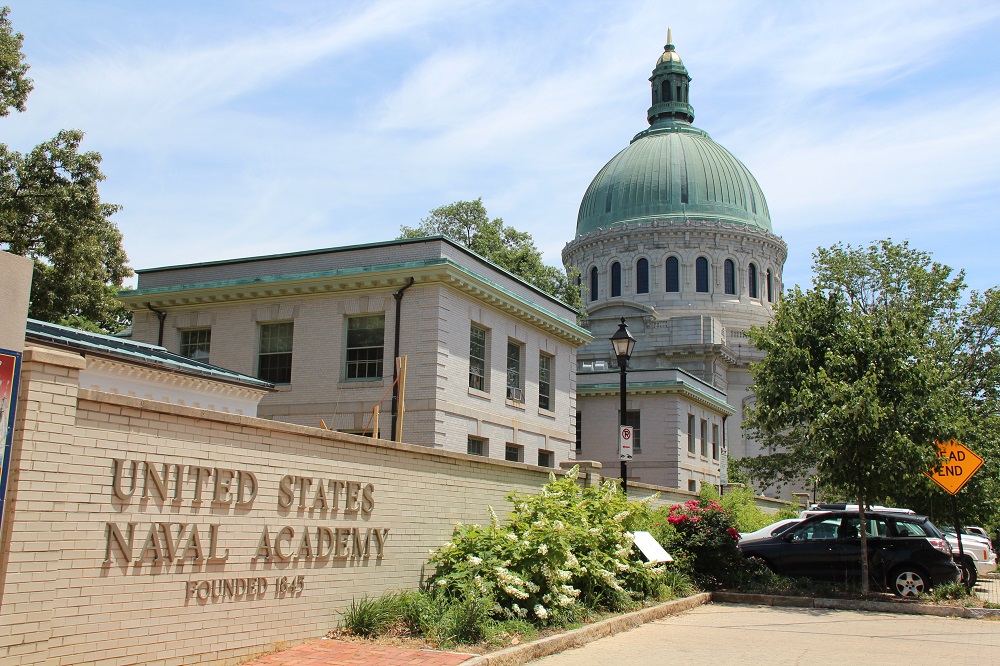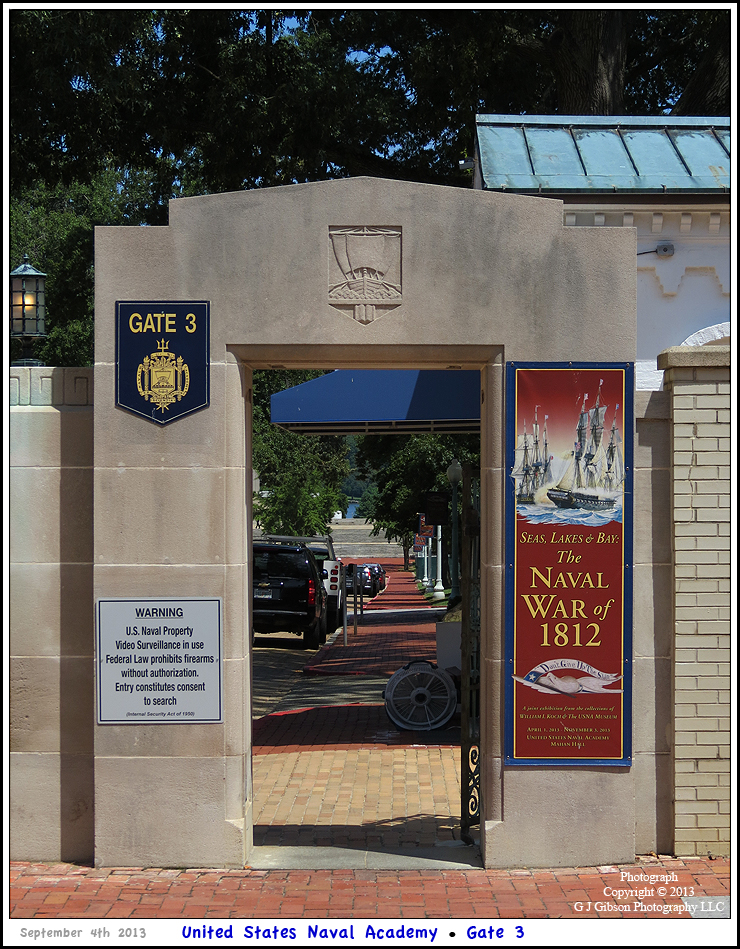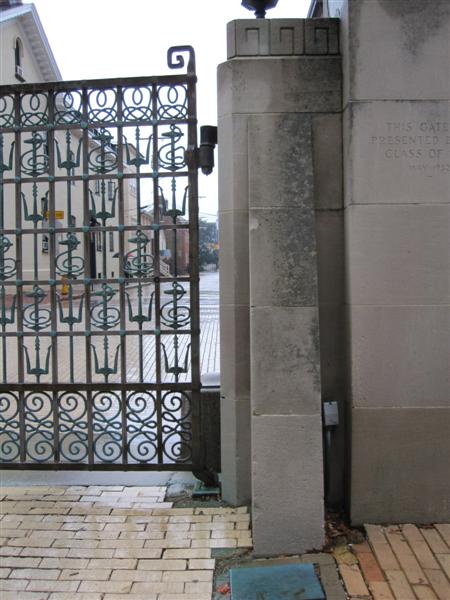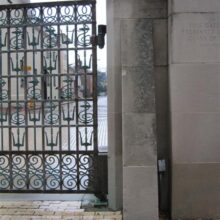United States Naval Academy
The United States Naval Academy was founded in 1845, making it the nation’s second oldest service academy. The grounds, located just off the Severn River and Chesapeake Bay, was selected as a “healthy and secluded” spot. It quickly grew, and in 1899, the architect Ernest Flagg designed the academic complex in the Beaux- Arts style to help accommodate its rapid expansion. The Academy is now a National Historic District. Gate 3 is a 1930’s addition to the campus, a spare and elegant Art Deco limestone entrance to the complex.
Due to deterioration over successive decades, a decision was made to disassemble and reconstruct the gate. We were contracted in 2010 to analyze the historic mortar from the gateway to help inform recommendations for rebuilding.
Material was sampled and brought to our laboratory for observation and characterization. Analysis revealed that this example used a fine crushed limestone as aggregate, whereas typical mortars would likely use a local sand source for this purpose. This type of aggregate is rare in this geographical region and marks an interesting and conscious design detail, one that would have likely been intended to match the limestone blocks and create a unified, monolithic whole. We documented the samples through microphotography, and provided recommendations for mortar mix design.







